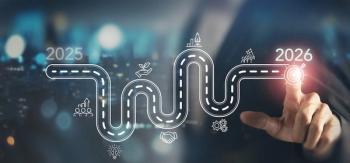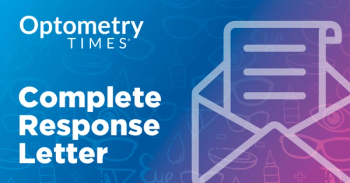
Multi-purpose solution delivers potency of hydrogen peroxide in safe, efficacious product
A multi-purpose solution for disinfecting contact lenses, based on a proprietary combination of alexidine dihydrochloride and polyquaternium-1 provided robust disinfection with a variety of soft contact lenses.
Those were the findings of a 6-month, double-masked, parallel group study of 270 patients that built upon 3-month results reported in a poster at the British Contact Lens Association.1, 2
Patients were randomly assigned to receive one of the two solutions according to a pre-determined schedule. Two patients were assigned to receive the alexidine dihydrochloride and polyquaternium-1 solution (the test solution) for every patient that was assigned to receive the polyquaternium-1 and myristamidopropyl dimethylamine solution (control).
The lenses were assessed for cleanliness by computer-measured light reflectance from the lens surface with dark field microscopy. The patients also were examined for corneal staining and asked to subjectively rate overall lens comfort.
Impact of adverse events
The researchers found no statistically significant differences between any of the five types of lenses cleaned with either of the two solutions. The only exception was a lower light reflectivity-indicating a cleaner lens-with the control solution on balafilcon A lenses, which was a statistically but not clinically significant difference. There was no difference between the two solutions in corneal staining change from baseline (p=0.320) and subjective overall lens comfort change from baseline (p=0.509).
Adverse events were more common in the control group than in the test group. At the 3-month visit, adverse events were reported in 11.8% of the patients using the control solution and 2.8% of the patients using the test solution. At the 6-month visit, adverse events were reported in 12.9% of the patients using the control solution and 3.4% of the patients using the test solution. These differences were statistically significant at both the 3-month (p=0.005) and 6-month (p=0.004) visits.
The adverse events were reported and classified by the principal investigators. There were a total of 6 events in the test group and 19 in the control group. These events included suspected viral conjunctivitis, corneal infiltrates, peripheral ulcers, giant papillary conjunctivitis, and corneal erosions. All the events were classified by etiology: related to the solution, of uncertain etiology, or not related to the solution. Many of the adverse events were reported to be of uncertain etiology.
"[The alexidine dihydrochloride and polyquaternium-1 test solution] is a highly effective dual-disinfectant soft lens care solution, with a kill rate exceeding the standard requirements with both panel organisms as well as clinical isolates," the researchers wrote. "It is therefore remarkable that this potent multi-purpose disinfecting solution has also been found to be gentle to ocular tissue and acceptably comfortable for patient use on a daily basis with all lenses, including silicone hydrogels."
Newsletter
Want more insights like this? Subscribe to Optometry Times and get clinical pearls and practice tips delivered straight to your inbox.













































